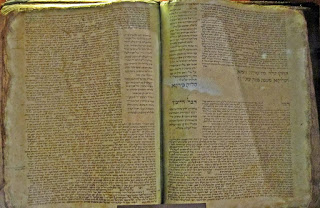Internet dalla Terra Promessa?
“Nulla si crea, nulla si distrugge, tutto si trasforma” verrebbe da dire in compagnia di Antoine Lavoisier…
Il link @ Luna Verde
Il link @ Sport
Il link @ Musica
English version
In the Jewish spirit space and time get confused, the roles are frequently exchanged: this is what some scholars say according to which, among the causes of this mix (which somehow has not inspired Albert Einstein in some way), it is also due to the Diaspora which, over time, he spread the “descendants” of David in the four corners of the globe; and the real existential space would be a sort of alternative geography, which would have nourished books and words over time. And in this perspective (space-time-literary) the Talmud is inserted, a term that means “object of deepening” but which, in some of its variations, becomes “sea”. And is not the Internet a great sea on which to navigate “to reach the cliffs of knowledge”? And, on closer inspection, the rabbinic text approach recalls the technique used to surf between browser pages. Do you identify a central page (the home?) And a series of references, annotations, references, comments (in a single word link?) Not necessarily linear and through which you do not necessarily return to the starting point.
“Nothing is created, nothing is destroyed, everything is transformed” would be said by Antoine Lavoisier …
Il video hat is the difference betweenTorah and Talmud?
Traduzione in latinorun per gioco (by Google Translator)
In Ecclesia Judaica Spiritus spatium et tempus impetro confusa, in gremium frequenter mutatum: hoc sine aliqua dicam ex qua, inter causas huius misce (id nescio quomodo non inspiravit Alberti V. Haller Primae aliqualiter), ita quoque ex dispersione degentibus quae in tempore intulisset arcam in debere “posteros” David autem per quattuor angulos globus; spatio reali existentiae et non esse geographia generis aliud quam fuisset nutrita super sermonibus libri, et tempus. Et hoc perspective (spatium-vicis-literaratura) Talmud argentove iniecta sit, est quia est terminus ‘qui profundius perceptam testantur quod’ autem, quae in aliqua sui varietate, fit “mare”. Lorem nec quam magnum mare navigare “adipisci scopulosque scientiae”. Et in propius inspectionem, in albo aut viridi sit approach rabbinic textus pasco paginae inter ars usus ad Rhoncus purus. Tu identificas a centralis pagina (in domum suam?). Et ex serie agitur, adnotationes, agitur, comment (ligamen in uno verbo?) Lineares et non necessarie quam non necessarie per initium redire.
“Nihil est creatum, nihil est regio, quae fit« esse dicitur … ab Antoinio Lavoisier
Photo by Wikipedia
